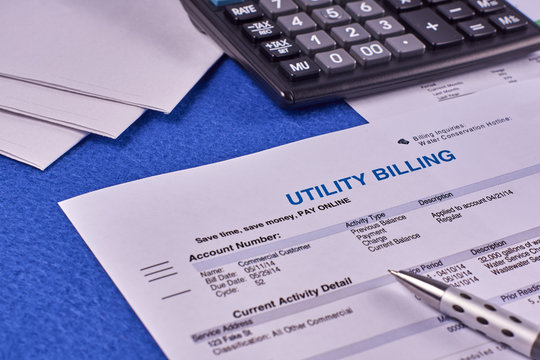Utility bills are an integral part of our daily lives, as they are used to pay for essential services such as electricity, gas, water, and sewerage. Understanding what a utility bill is and the different types available is essential to effectively managing your household expenses. In this article, we’ll explore what a utility bill is, the types of utility bills, and how to manage them effectively. You can download plenty of Utility Bill Templates files from our website.
Table of Contents
- Introduction
- What is a Utility Bill?
- Types of Utility Bills
- Electricity Bill
- Gas Bill
- Water Bill
- Sewerage Bill
- Understanding Utility Bill Components
- Service Charges
- Consumption Charges
- Taxes and Fees
- How to Manage Utility Bills Effectively
- Budgeting
- Understanding Your Usage
- Energy-Saving Practices
- Conclusion
- FAQs
Introduction
A utility bill is a document that outlines the charges for the services you have consumed. Utility bills are issued on a monthly or quarterly basis and are an essential component of managing household expenses. Understanding the different types of utility bills and their components is essential to effectively managing your expenses.

What is a Utility Bill?
A utility bill is a document issued by a utility provider that outlines the charges for the services they have provided. These services can include electricity, gas, water, and sewerage. Utility bills are typically issued on a monthly or quarterly basis, and the amount charged is based on the amount of service used during that period. You must also download Fake Utility Bill Templates PSD from here.
Types of Utility Bills
There are four main types of utility bills: electricity, gas, water, and sewerage bills. Let’s take a closer look at each of these types.
Electricity Bill
An electricity bill is a document that outlines the charges for the electricity consumed by a household. The amount charged is based on the amount of electricity consumed during the billing period, measured in kilowatt-hours (kWh).
Gas Bill
A gas bill is a document that outlines the charges for the natural gas consumed by a household. The amount charged is based on the amount of gas consumed during the billing period, measured in cubic meters or cubic feet.
Water Bill
A water bill is a document that outlines the charges for the water consumed by a household. The amount charged is based on the amount of water consumed during the billing period, measured in cubic meters or gallons.
Sewerage Bill
A sewerage bill is a document that outlines the charges for the treatment and disposal of wastewater produced by a household. The amount charged is based on the amount of water consumed during the billing period.
Understanding Utility Bill Components
Utility bills are made up of several components, including service charges, consumption charges, taxes, and fees. Understanding these components is essential to effectively managing your expenses.
Service Charges
Service charges are fixed fees that are charged by utility providers for the maintenance and operation of the utility infrastructure. These charges are typically billed on a monthly or quarterly basis and are not dependent on the amount of service used.
Consumption Charges
Consumption charges are fees that are charged by utility providers based on the amount of service used during the billing period. These charges are typically billed on a per-unit basis, such as kilowatt-hours for electricity or cubic meters for water.
Taxes and Fees
Utility bills may also include taxes and fees, such as sales tax, regulatory fees, and environmental fees. These charges are typically based on a percentage of the total bill and are not dependent on the amount of service used.
How to Manage Utility Bills Effectively
Managing utility bills effectively is
Managing utility bills effectively is essential to avoid overspending and to ensure that you are paying only for the services you need. Here are some tips to help you manage your utility bills effectively:
Budgeting
Creating a budget is an essential component of managing household expenses, including utility bills. Start by analyzing your previous utility bills to determine your average monthly expenditure. Once you have a good understanding of your monthly expenses, create a budget that includes your utility bills, and allocate funds accordingly.
Understanding Your Usage
Understanding your utility usage is another critical component of managing your utility bills effectively. Most utility providers offer online tools that allow you to monitor your usage and compare it to previous periods. Use these tools to track your usage and identify areas where you can reduce consumption.
Energy-Saving Practices
Adopting energy-saving practices is an effective way to reduce your utility bills. Simple practices such as turning off lights and appliances when not in use, using energy-efficient bulbs and appliances, and adjusting your thermostat can all contribute to reducing your utility bills.
FAQs
Can I dispute a utility bill if I think it is incorrect?
Yes, if you think your utility bill is incorrect, you can contact your utility provider and dispute the charges.
Can I switch utility providers if I am not satisfied with the service or pricing?
Yes, you can switch utility providers if you are not satisfied with the service or pricing. However, be sure to research your options thoroughly before making a switch.
Can I set up automatic payments for my utility bills?
Yes, most utility providers offer the option to set up automatic payments to ensure that your bills are paid on time.
Can I receive paperless utility bills?
Yes, most utility providers offer the option to receive paperless bills via email or online portals.
How can I reduce my utility bills?
You can reduce your utility bills by adopting energy-saving practices, monitoring your usage, and switching to energy-efficient appliances and bulbs.
Conclusion
Utility bills are an essential component of managing household expenses, and understanding them is critical to managing your finances effectively. By understanding the different types of utility bills and their components, and adopting energy-saving practices, you can effectively manage your utility bills and avoid overspending.
